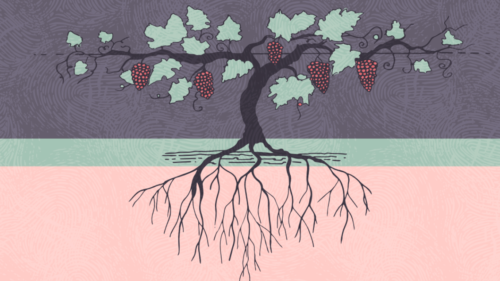This post originally appeared on redthumbwine.com and was written by Diego Vasquez.
How does soil impact the flavor of wine?
Every wine lover is enamored with visiting a winery and tasting its wines. But have you ever stood in the middle of a vineyard, looked down below your feet, grabbed a handful of that dirt, and wondered how this element of winemaking plays a role in the delicious end product?
Soil: the unsung hero of wine production
Terroir is a term used to describe the personality of wine that’s often influenced by the soil in which it grew as well as its winegrowing practices. These factors impact the ripening of the grapes as well as the unique aromas and flavors of the finished wine. Think of it as a blueprint of that particular wine that can’t be replicated at any other vineyard.
A good, neutral soil will allow the vines to absorb the nutrients, but how does this translate into what you taste in your wine glass? We’ve all heard eloquent descriptors such as “river stones” and “earthy aromas” from wine snobs describing a gulp of delicious juice, but how does terroir impact taste?
Conventional wine vs. natural wine
Conventional winemaking doesn’t focus on flavor from the vineyard. Their farming practices reflect this, as typically nutrients end up stripped from the soil in an effort to maximize the amount of grapes harvested. This focus on grape yield, instead of grape quality, raises the pH levels of the soil, which makes it more difficult for grapevines to absorb nutrients (and therefore flavor) from the earth. Artificial methods are often used to bring the pH back to a lower level so the winemaker can achieve the desired material from which to produce their wines.
Natural winemakers, by contrast, typically leverage techniques like biodynamic farming, which creates a natural ecosystem in which the vines grow and absorb nutrients naturally. These more sustainable practices don’t negatively affect the soil. Because the nutrients in the soil are replenished as an outcome of these natural farming practices, the pH levels don’t rise as high in conventional farming. This omits the need for further intervention to control the pH. These grapevines grow stronger and produce more flavorful grapes. They also reach the second stage of ripening faster, meaning the grapes reach higher brix levels, acid levels drop earlier, and the phenolics mature quickly—all the hallmarks of a healthy vineyard. And healthy vineyards produce delicious, unique wines.
The relationship between what you taste and where it grew
Winemakers who embrace the concept of terroir as their ethos and focus on the influence of soil are producing some of the most interesting wines today. Many old-world winemakers feel compelled to produce wines that are representative of, and loyal to, the vineyards in which they toil. These producers usually merge the qualities of the wines and the soils in which they are grown. That same wine connoisseur with the articulate descriptors can then explain the mineral qualities of the wine, which is directly indicative of the soil in which it grew.
At RedThumb, we seek out winemakers that value the land in which they grow their grapes. They understand that good soil produces flavorful grapes, eliminating the need for unnecessary additives commonly found in other wines. Their sustainable and low-intervention natural farming practices yield great wines that we would love to share with you. Next time you have a sip of wine, remember that it all starts with the soil. Cheers.





